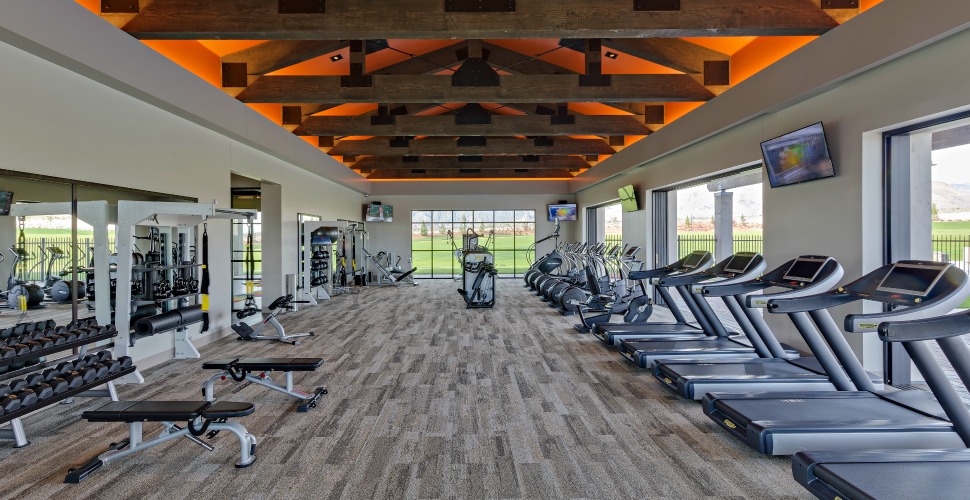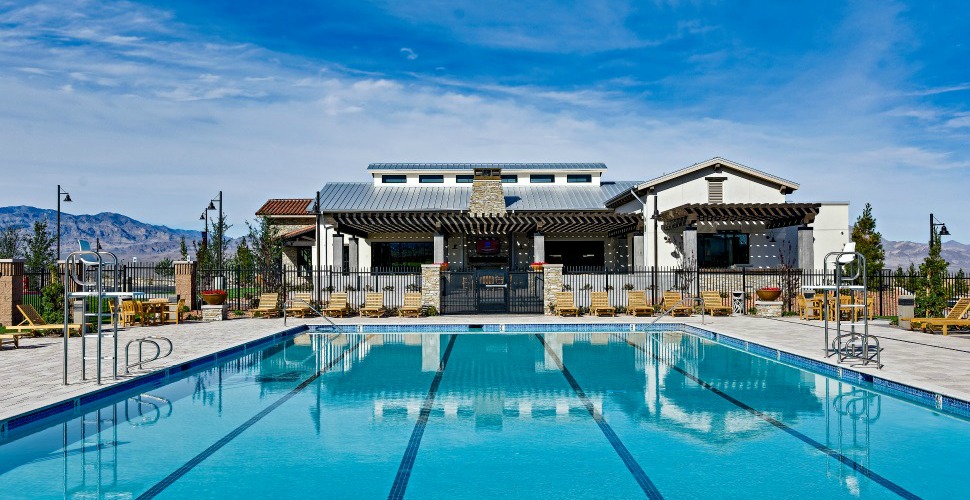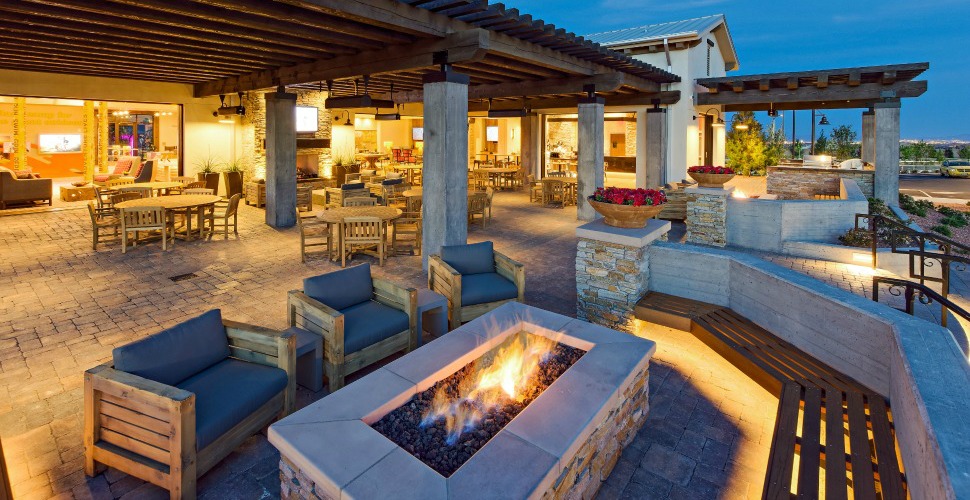In just one generation, how Americans live has changed drastically, and not all for the better. Modern communities often lack the social connections that were once common, as highlighted by sociologist Ray Oldenburg. While technology has improved many aspects of life, it can also harm emotional and social well-being. However, choosing the right community can counter these negative effects and significantly boost your well-being.
Here are six key factors to consider before your next move:
1. The Importance of Community for Well-Being
Oldenburg is one of many sociologists who lament the loss of community in many American neighborhoods. Most modern, sprawling residential areas are no longer designed for community.
The truth is, community and in-person social engagement are crucial for your well being. Studies have found that:
- Participation in community center activities—including leisure, exercise, cooking, befriending, and arts and crafts—is associated with positive changes in mental health and personal and social well-being.
- Better social connectedness is associated with lower risks of depression and anxiety.
The benefits extend beyond mental health as well:
- The influence of social relationships impacts long-term physical health outcomes, including mortality risk.
- Empirical evidence indicates that weak social connectedness represents a serious risk factor for chronic diseases, including cardiovascular disease, diabetes, and various cancers.
Our wellness depends on “social” being more than a type of media.
2. Why Nature Access is Essential for Wellness
Personal well being is dramatically enhanced by access to nature and natural spaces.
Scientific study has found that, “access to nature can promote improved physical, mental, and social health and wellbeing.” A meta-analysis of studies on the impact of nature on human wellness found that:
- 92% of studies demonstrated consistent improvements across any health outcome where individuals engaged with natural, outdoor environments.
- 98% of studies showed mental health outcomes improve as a result of regular contact with natural spaces.
- 83% of studies showed physical health outcomes improve as a result of regular contact with natural spaces.
You don’t need to live in a tent in the wilderness to benefit from the positive effects of nature, but you do, realistically, need to live somewhere with access to natural spaces. Choosing a home and neighborhood with natural elements incorporated, and with national parks and preserves close by, is a good way to prioritize your family’s wellness.
3. How Fitness Enhances Physical and Mental Wellness in Your Community
It’s no secret that good fitness routines have a positive impact on physical health, but they’re also central to strong social-emotional health. Studies have shown that:
- Exercise is effective in treating clinical depression, reducing anxiety, and improving mood states, self-esteem, and cognitive function in adults.
- Physical fitness has a positive association with overall mental health in children and adolescents.
The difficulty is that long-term physical fitness routines often require access to facilities and the accountability of classes or programs. Most American adults have to drive across town to a gym, and children and adolescents may only have very short periods of access to a daily physical education class.
Communities and neighborhoods that are close to local gyms, or that have recreation centers and athletic facilities of their own, provide the kind of resources people need for well being.
4. The Role of Arts in Improving Well-Being and Social Engagement
Participation in, and practice of, the arts is extremely beneficial for well being—especially in communal settings—but most U.S. neighborhoods keep artistic outlets on the fringes. In fact, studies have found that participation in group-based arts and creativity can have positive physical, mental, and social health impacts.
Yet for all the benefits, fewer than one in five American adults are learning an art form—even informally.
Again, proximity is key. People of all ages are more likely to participate in the arts if they live in a community that values and promotes the arts.
5. The Impact of Nutrition on Community Wellness and Well-Being
Healthy, high-quality food is important for physical health, but access to good food is a factor in mental and emotional health as well. Studies have revealed that access to good food impacts well-being by fostering a positive psychological, physical, emotional, and social relationship with food.
Unfortunately, about 10% of U.S. census tracts—or 13.5 million households—exist in food deserts, where high-quality food is unavailable or unaffordable for most residents. Choosing a community with ready access to nutritious food choices is important for well being.
6. How Quality Education Enhances Family and Community Well-Being
Access to good education facilities and passionate educators is a priority for most families. Safe, top-tier academic environments relieve stress on parents and build positive, growth mindsets in children.
- Education improves well-being by increasing access to work, economic resources, and stable social relationships, leading to lower levels of emotional and physical distress.
- One observational study even discovered that parents of better-educated children enjoy better health—with an extra year of children’s education improving the probability of good parental health by about 7.7%.
However, many neighborhoods today are built according to demand and available real estate. Whatever local school districts happen to be nearby are responsible for responding to increasing enrollments however they can.
An ideal community, on the other hand, looks for good schools as part of initial planning and incorporates long-term goals to develop exclusive educational facilities if possible.
Your Community Determines Your Wellness
For so many reasons, the neighborhood and community that you choose to live in, and possibly raise a family in, has the most profound effect on individual wellness.
Promote your well being and foster healthy, meaningful relationships with others by selecting a community in which wellness is valued, prioritized, and even facilitated through organized activities and events.
Community wellness offers residents more than health benefits. The types of activities facilitated further brings people together—turning neighbors into friends, and promoting a healthy, happy family life for children and adults alike.
Experience True Community and Well Being at Skye Canyon
Get to know your neighbors beyond just a name. Be involved in the community—not just to feel included, but to actually become a vital part of making it the community it is.
- Community: Skye Canyon is Las Vegas’ premier master-planned community, with events and activities planned and available year-round.
- Nature: Five community parks provide ample space for any outdoor activity you prefer, and multiple national parks and nature spaces are a short drive away.
- Fitness: Skye Fitness is 10,000 square feet of equipment, pools, courts, and more. Meet with a personal trainer or sign up for a specialty fitness class.
- Arts: Skye life emphasizes the arts and creative endeavors through hands-on workshops, classes, and regular community events.
- Nutrition: The Skye Canyon Marketplace is anchored by Smith’s Marketplace—the community’s very own extensive grocery store.
- Education: Skye Canyon families have easy access to public and private schools for every age group. Future development plans for the community include education facilities for kindergarten through high school.
Ready to see it for yourself? Give us a call at 702-786-0207 or fill out an online inquiry form today. We can answer any questions and get you set up to visit.
Frequently Asked Questions (FAQs)
- Why does where you live affect your health?
Where you live significantly impacts your physical, mental, and emotional health. A well-connected community with access to nature, fitness facilities, healthy food, and educational opportunities fosters a healthier lifestyle. On the other hand, living in an area without these amenities can contribute to poor physical and mental health outcomes, including higher rates of stress and chronic illnesses. - How do communities promote well-being?
Communities that prioritize well-being often offer amenities like parks, gyms, social events, and health-oriented services that encourage residents to live healthier lifestyles. By fostering social interaction and providing access to necessary resources, such communities help reduce stress, enhance mental health, and improve overall life satisfaction. - What are the benefits of living in a master-planned community?
Master-planned communities like Skye Canyon are designed with wellness in mind. These communities offer a range of amenities such as parks, fitness centers, educational facilities, and convenient access to healthy food. Residents enjoy a balanced lifestyle that promotes health, community engagement, and social well-being, making it easier to lead a fulfilling and healthy life.



